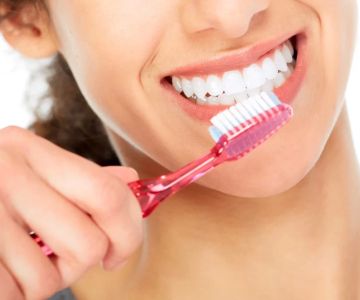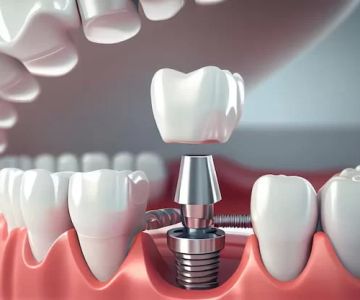Benefits of Porcelain Dental Crowns
- What Are Porcelain Dental Crowns?
- Advantages of Porcelain Crowns
- How Porcelain Crowns Are Placed
- Porcelain vs. Metal Crowns
- Caring for Porcelain Crowns
- Conclusion and Buying Guide
What Are Porcelain Dental Crowns?
Porcelain dental crowns are custom-made caps that fit over a damaged or decayed tooth. These crowns are designed to restore the tooth's shape, size, and strength, while also improving its appearance. Porcelain crowns are made from durable, tooth-colored material, making them an ideal choice for people who want a natural-looking solution for damaged teeth.
The process of getting a porcelain crown typically involves two dental visits. During the first visit, the dentist prepares the tooth by removing any decay and shaping it to fit the crown. An impression of the tooth is then taken, and a custom crown is made. On the second visit, the crown is placed over the prepared tooth, and the fit is checked for comfort and functionality.
Advantages of Porcelain Crowns
Porcelain dental crowns offer numerous benefits, making them a popular choice among patients. Here are some of the main advantages:
- Natural Appearance: Porcelain crowns are designed to match the natural color of your teeth, providing a seamless blend with your smile.
- Durability: Porcelain is a strong and long-lasting material, offering durability that can withstand everyday chewing and biting forces.
- Biocompatibility: Porcelain crowns are less likely to cause allergic reactions or gum irritation, making them a safe option for most patients.
- Minimal Tooth Reduction: Unlike some other materials, porcelain crowns require less removal of the natural tooth structure, preserving more of the original tooth.
These benefits make porcelain crowns an excellent option for restoring the function and appearance of your teeth while maintaining a natural look.
How Porcelain Crowns Are Placed
The placement of porcelain crowns typically involves two visits to the dentist. During the first visit, the dentist will:
- Examine and prepare the tooth by removing any decayed areas.
- Shape the remaining tooth to ensure a proper fit for the crown.
- Take an impression or digital scan of the tooth, which will be used to create the custom crown.
- Place a temporary crown to protect the prepared tooth until the permanent crown is ready.
During the second visit, the dentist will remove the temporary crown and place the porcelain crown over the prepared tooth. The fit and appearance will be checked, and any necessary adjustments will be made to ensure a perfect match.
Porcelain vs. Metal Crowns
When considering dental crowns, one of the main decisions you'll face is whether to choose porcelain or metal crowns. Here’s a comparison to help you decide:
- Appearance: Porcelain crowns are highly favored for their natural appearance, as they blend well with the natural tooth color. Metal crowns, on the other hand, are more visible and are usually used for back teeth where aesthetics are less important.
- Durability: Metal crowns are generally more durable and resistant to wear, making them ideal for back teeth that experience heavy chewing forces. However, porcelain crowns have improved significantly in terms of strength and durability over the years.
- Comfort: Porcelain crowns are more biocompatible and generally cause fewer issues with gum irritation compared to metal crowns, which may cause discomfort for some patients due to their metallic properties.
Ultimately, the choice between porcelain and metal crowns depends on your specific needs, budget, and aesthetic preferences.
Caring for Porcelain Crowns
After receiving a porcelain crown, it’s important to take care of it to ensure its longevity. Here are some tips for maintaining your porcelain crowns:
- Brush and floss regularly to keep the crown and surrounding teeth clean.
- Avoid chewing hard foods, ice, or using your teeth as tools to prevent damage to the crown.
- Visit your dentist regularly for check-ups to ensure the crown is in good condition.
- If you experience any discomfort or notice the crown becoming loose, contact your dentist immediately for adjustments or re-cementing.
Proper care will help ensure that your porcelain crown remains in excellent condition and continues to provide reliable function and a natural appearance.
Conclusion and Buying Guide
Porcelain dental crowns are a highly effective and aesthetically pleasing solution for restoring damaged teeth. Their natural appearance, durability, and biocompatibility make them an excellent choice for many patients. Whether you're looking to restore the function of a damaged tooth or improve your smile, porcelain crowns offer numerous benefits.
If you’re considering porcelain crowns, visit Dentistry Toothtruth for more information on how these crowns can help restore your smile and overall dental health. Our team of experts can guide you through the process and ensure you receive the best care.







 Dental Crown in an Hour: Naples4.0 (121 review)
Dental Crown in an Hour: Naples4.0 (121 review) Crown Point Dental Care4.0 (453 review)
Crown Point Dental Care4.0 (453 review) Saxon Dentistry: Chris Saxon DDS5.0 (246 review)
Saxon Dentistry: Chris Saxon DDS5.0 (246 review) Absolute Dental - Lake Mead4.0 (332 review)
Absolute Dental - Lake Mead4.0 (332 review) Bella Smiles at Roslyn5.0 (112 review)
Bella Smiles at Roslyn5.0 (112 review) Dr. Alison Seliger-Schamberg, DMD0.0 (0 review)
Dr. Alison Seliger-Schamberg, DMD0.0 (0 review) The Importance of Oral Health Education During Pregnancy for a Healthy Pregnancy
The Importance of Oral Health Education During Pregnancy for a Healthy Pregnancy Best Tips for Brushing Your Teeth Properly for Healthy Gums: Essential Techniques for Oral Health
Best Tips for Brushing Your Teeth Properly for Healthy Gums: Essential Techniques for Oral Health Why Skipping Dental Checkups Can Lead to Bigger Oral Health Problems
Why Skipping Dental Checkups Can Lead to Bigger Oral Health Problems Advantages of Porcelain Dental Restorations
Advantages of Porcelain Dental Restorations How Can Diabetes Cause Tooth and Gum Problems? Preventing and Managing Oral Health Issues
How Can Diabetes Cause Tooth and Gum Problems? Preventing and Managing Oral Health Issues Healthy Habits for Promoting Good Oral Health and Hygiene: Tips for a Healthy Smile
Healthy Habits for Promoting Good Oral Health and Hygiene: Tips for a Healthy Smile